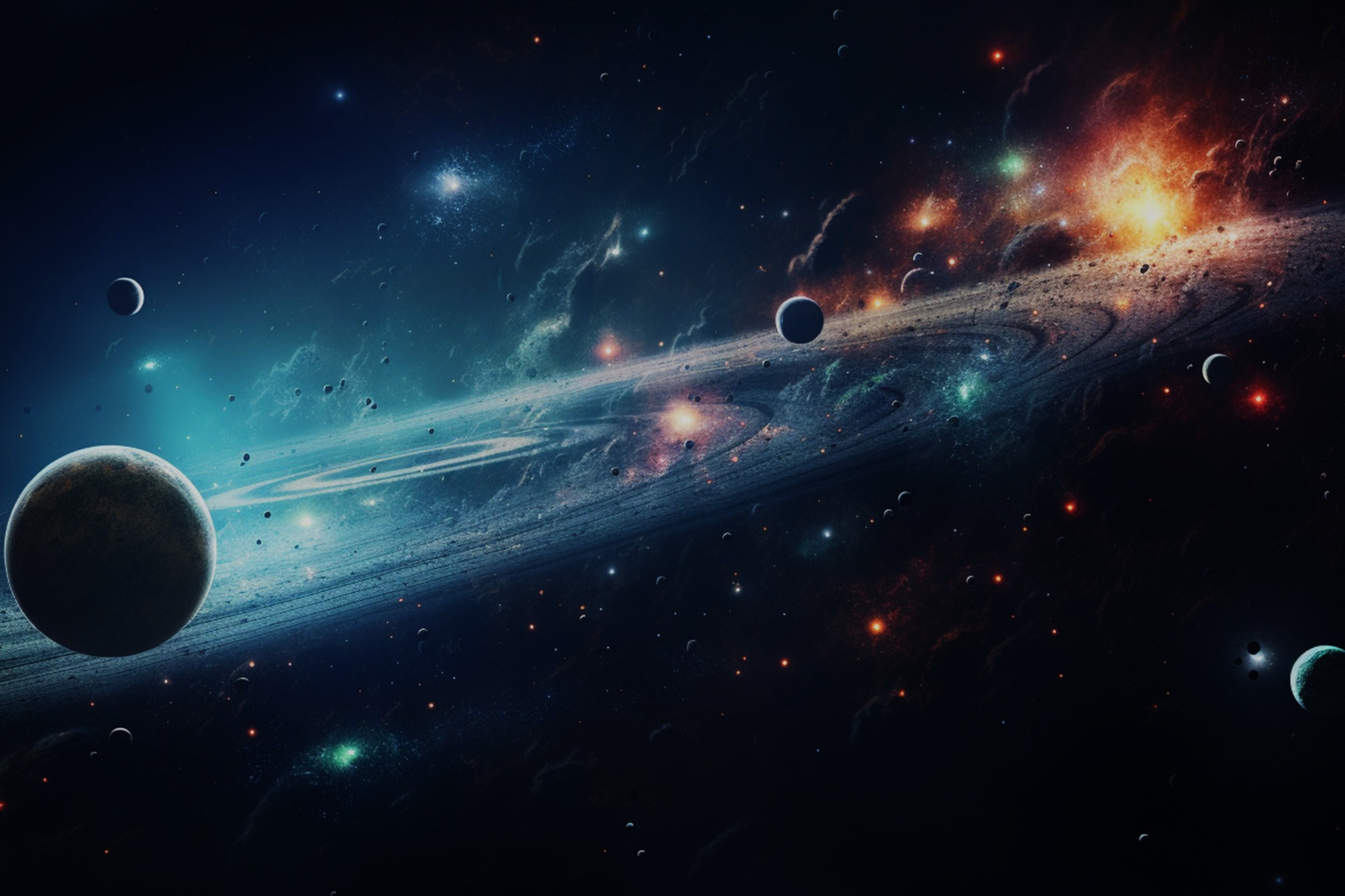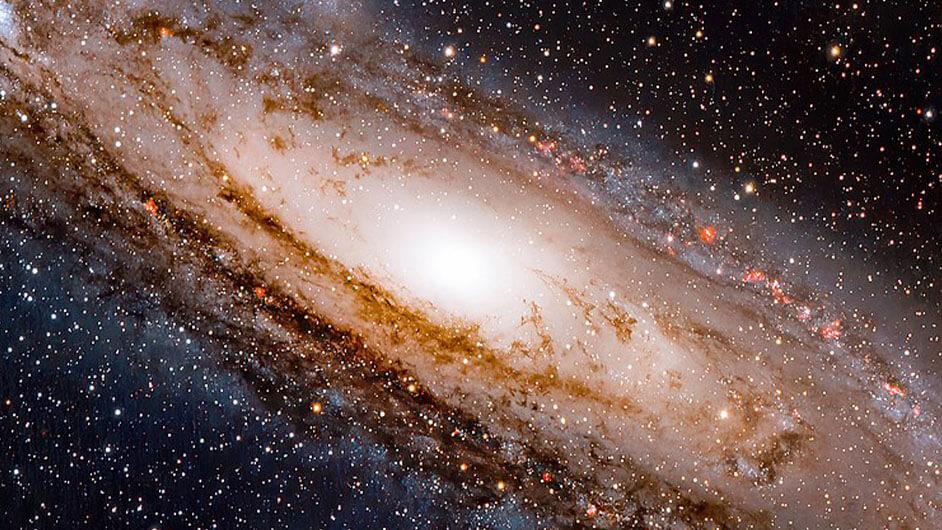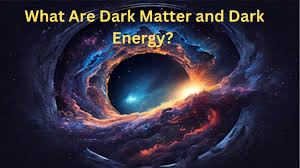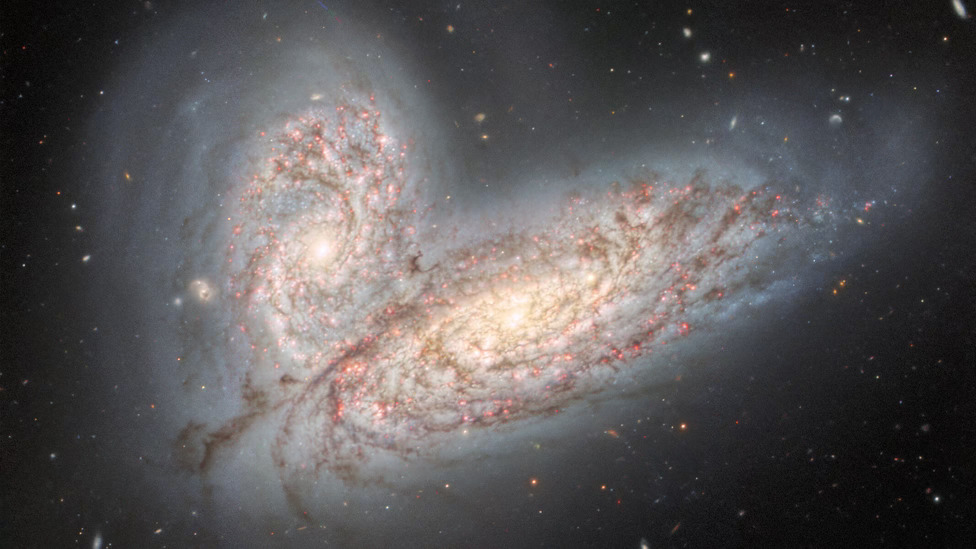
Blog Post

 Saatvick Saxena
Saatvick SaxenaThe universe is everything. It includes all of space, and all the matter and energy that space contains. It even includes time itself and, of course, it includes you.
The Big Bang was not an explosion in space, as the theory's name might suggest. it was the appearance of space everywhere in the universe. Both space and time were created at The Big Bang about 14 billion years ago, so there is nothing beyond the universe. The universe began as an incredibly hot, dense point roughly 13.7 billion years ago. All the matter and energy we can observe, concentrated in a region smaller than a dime, began to expand at an incredibly rapid rate.
The Cosmic Microwave Background (CMB) is the cooled remnant of the first light that could ever travel freely throughout the Universe.
The cosmic background radiation provides direct evidence that the universe did expand from a dense, hot state, for this is the condition needed to produce the radiation. all evidence indicates that the light elements were produced in the hot, young universe, whereas the heavier elements appeared later, as products of the thermonuclear reactions that power stars.The cosmic background radiation provides direct evidence that the universe did expand from a dense, hot state, for this is the condition needed to produce the radiation. all evidence indicates that the light elements were produced in the hot, young universe, whereas the heavier elements appeared later, as products of the thermonuclear reactions that power stars.
During inflation, the universe grew exponentially and got cooler and less dense. With expansion the temperature dropped the forces of nature assumed their present properties, and the elementary particles known as quarks started roaming freely in a sea of energy. The early universe was so hot and dense that atoms could not exist. When the universe had expanded, the free quarks became confined in neutrons and protons which upon further cooling combined to form atomic nuclei, including most of the helium and deuterium present today. Light chemical elements were created. As the universe expanded, temperatures cooled and protons and neutrons collided to make deuterium, which is an isotope of hydrogen. Much of this deuterium combined to make helium. During the cooling Expansion, nuclear physics reaction between proton, neutrons, etc. resulted in nucleosynthesis of light elements like D, He, Li. Conditions were still too hot, however, for atomic nuclei to capture electrons. Neutral atoms appeared in abundance only after the expansion had continued for 300,000 years. For the first 380,000 years after the Big Bang, however, the intense heat from the universe's creation made it essentially too hot for light to shine. Atoms crashed together with enough force to break up into a dense, opaque plasma of protons, neutrons and electrons that scattered light like fog. This era of recombination was followed by a period of darkness before stars and other bright objects were formed.
Roughly 400 million years after the Big Bang, the universe began to come out of its dark ages. This period in the universe's evolution is called the age of re-ionization. During this time, clumps of gas collapsed enough to form the very first stars and galaxies. The emitted ultraviolet light from these energetic events cleared out and destroyed most of the surrounding neutral hydrogen gas. The process of re-ionization, plus the clearing of foggy hydrogen gas, caused the universe to become transparent to ultraviolet light for the first time. The neutral atoms then began to coalesce(form together) into gas clouds, which later evolved into stars. With expansion, the stars formed groups now recognized as young galaxies. Galaxies and groups and clusters of galaxies are locally distributed inhomogeneously (non uniformly) in space, but on large enough scales and in a statistical sense the distribution approaches isotropy(uniform in all directions).
When the universe was half its present size, nuclear reactions in stars had produced most of the heavy elements through fusion from which terrestrial planets were made. Planets were also a result of the clumping of ions from molecular clouds. Our solar system is estimated to have been born a little after 9 billion years after the Big Bang, making it about 4.6 billion years old. Many scientists think the sun and the rest of our solar system was formed from a giant, rotating cloud of gas and dust known as the solar nebula. As gravity caused the nebula to collapse, it spun faster and flattened into a disk. During this phase, most of the material was pulled toward the center to form the sun. Luna, our moon was formed during a collision between the Earth and another small planet, about the size of Mars. The debris from this impact collected in an orbit around Earth to form the Moon.The New Frontiers program is a series of space exploration missions being conducted by NASA with the purpose of furthering the understanding of the Solar System.
Over time the formation of stars has consumed the supply of gas in galaxies, and hence the population of stars is waning. There have been many theories on how the universe may end but one of the most accepted theories are that the universe may expand forever, in which case all the galaxies and stars will eventually grow dark and cold. The alternative to this big chill is a big crunch. If the mass of the universe is large enough, gravity will eventually reverse the expansion, and all matter and energy will be reunited.
The shape of the 3-D part of the 4-D manifold can be closed (like a ball), flat (like a table) or open (like a saddle). Even if 3-D space is flat, 4-D spacetime is not: matter implies curvature, so the universe has a definite shape.
Einstein’s General Theory of Relativity, a theory of gravity suggests that instead of being an invisible force that attracts objects to one another, gravity is a curving or warping of space. The more massive an object, the more it warps the space around it and plays a major role in the shape of our universe.
In the currently popular model of the Universe, 70% is thought to be dark energy, 25% dark matter and 5% normal matter.
Mysterious and invisible mass known as dark matter is inferred because of the gravitational pull it exerts on regular matter. One hypothesis states the mysterious stuff could be formed by exotic particles that don't interact with light or regular matter, which is why it has been so difficult to detect. Gravitational lensing and the existence of many interstellar structures can only be supported by dark matter.
Dark energy is thought to be the strange force that is pulling the cosmos apart at ever-increasing speeds, but it remains undetected and shrouded in mystery. The existence of this elusive energy, which is thought to make up 70% of the universe, is one of the most hotly debated topics in cosmology. We still dont have a proper understanding of dark matter and energy which play a very significant role in the formation of our universe and interstellar phenomenas. There's a limit to how much of the universe we can see. The observable universe is finite in that it hasn't existed forever. It extends 46 billion light years in every direction from us. Light is not the fastest phenomena in the universe! Inflation is way faster than light and because of it galaxy clusters are drifting away from each other.
As the galaxies slowly drift away in the horizon headed someplace we cant comprehend, our chances of encountering another intelligent life decreases.
Will we one day understand the universe?
Maybe we will, maybe we won’t but we must live in the moment and contribute towards the goal of finding the purpose of the universe, our existence.
Recent Posts

 Saakshita Saxena
Saakshita Saxena
 Saatvick Saxena
Saatvick Saxena

 Saatvick Saxena
Saatvick Saxena

 Saatvick Saxena
Saatvick Saxena



